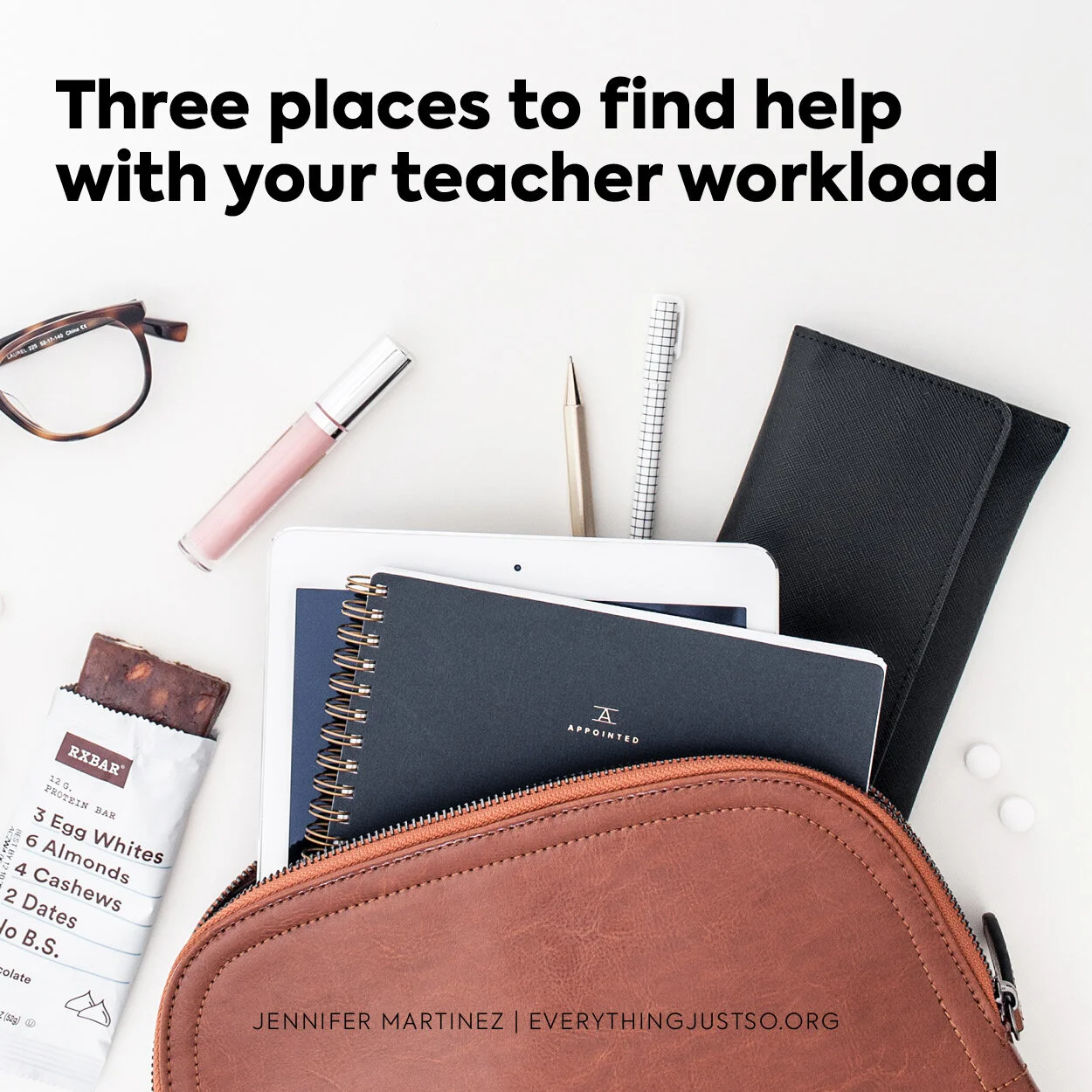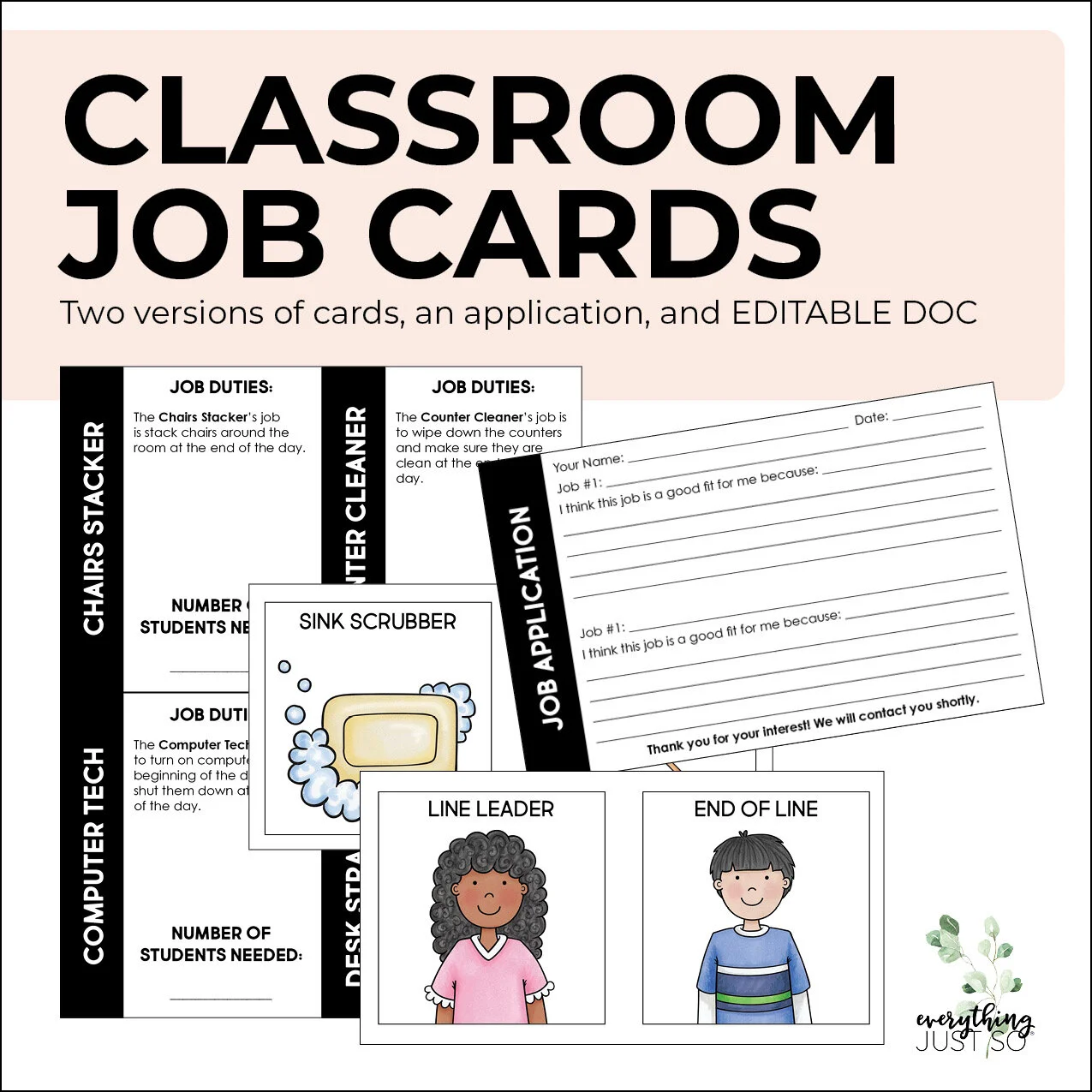Three Resources for Help to Ease Your Workload
Don’t try to be an island at work doing everything yourself.
Utilize help in order to get it all done and maintain a work-life balance.
Here are three simple, but often under utilized sources of help to simplify and lighten your teaching workload.
This post contains affiliate links. This means, should you make a purchase using a link, I earn a small amount at no extra cost to you. The earnings help cover the cost of this site.
Do you function like an island at work? Trying to master it all on your own?
I'll admit, that was my journey through much of my teaching career. While I wouldn't consider myself a control freak, I took my responsibilities as an educator seriously and wanted to make sure everything was... you guessed it... just so.
While that approach worked well in filtering distractions and getting my work done, it also resulted in severe fatigue and isolation.
Not so great when trying to go the distance in a 35-year career.
Most teachers are surrounded by three sources of help but rarely use them. If you follow any of the suggestions in this six-week series, let it be this one.
Don't go it alone.
Utilize the help surrounding you to simplify your workload and create a work-life balance.
Three Sources of Help to Ease Your Workload
1 | Volunteers
I've worked in schools where volunteers of any kind weren't allowed and in other schools where volunteers ran rampant. Within those two extremes, you'll find classrooms blessed with selfless parents and other community members who sincerely want to help teachers do their jobs.
Let them.
Basic volunteer tasks include copying, laminating, hanging student work in hallways, changing bulletin boards, and updating centers.
Imagine never having to copy again.
Or laminate.
Or better yet - never having to cut out all that you've copied and laminated.
The hours you could save by giving up these tasks alone are endless.
But volunteers can do so much more. With a little bit of training, they can become excellent reading buddies, fluency partners, or center leaders.
My best piece of advice is to decide what are your most important tasks as an educator and begin finding ways to reduce or delegate everything else.
Is it important to be the one with whom your struggling reader practices reading fluently? Of course. But can you always be the one with whom she reads so that all other students are ignored? Of course not.
I'm not suggesting that volunteers completely take over vital routines such as monitoring students' reading progress. However, they can serve the important task of practicing in between check-ins with you.
A few ideas of how volunteers can be of help to you:
Copying materials for the week (teaching resources, small group resources, center response sheets, etc.)
Laminating student materials, keepsakes, and anchor charts.
Completing Positive News brag sheets. I would keep a running note on my phone or computer whenever I noticed students doing something worthy of a Positive News Report. On weeks when I didn't have time to fill out the actual paper copies to post or hand out, I gave my electronic list to a volunteer who completed the individual notes for me.
Updating (or restocking) centers and station materials.
Updating (or restocking) your morning meeting or calendar area.
2 | Teammates
Do you have a peer you respect and whose work ethic matches yours?
Latch on to them, friend. Utilize that valuable resource to the hilt. Work together to develop curriculum maps and unit plans. Divide each week's workload when it comes to planning and organizing teaching resources. Share responsibilities, such as creating resources or picking up books from your public library. Work and share together as much as possible to lighten your load.
Don't have a peer in your building? (I feel for you, friend. I've been there too!) Find a virtual buddy. While your plans may not always align with someone who doesn't teach in your building, one benefit of the CCSS is that most teachers within a grade level are teaching the same standards, and oftentimes the same topics. Find someone you respect online through teaching blogs, professional development sessions, or even TPT stores, and begin making connections.
Here's an action step for the week - make a quick mental list of your strengths in the classroom and the one area where you feel you have some room to grow. Then think of the one person on your team or building who is strong in that area of weakness and might be able to use some help in an area where you have a strength. Email her to see if she would be interested in scheduling a time to talk about working together to help ease both of your workloads.
3 | Students
I used to subscribe to the idea that teachers who spent class time allowing students to grade their own papers were either lazy and/or poor time managers. Over the years though, my opinion has changed.
If you're having students grade every single assignment so that all you have left to do is record grades, then you might need to rethink both the purpose of the assignment and the way in which you value class time. However, having students grade specific types of assignments in order to use that time to review, assess, and reflect is, in my opinion, a valuable use of time.
Before giving any assignment, I encourage you to determine importance. As I've said before, you can drastically reduce your workload just by weeding out any assignment that isn't vitally necessary. With what's left over, some lend themselves well to quick checks in class with students.
There's no need to drag home a stack of short, formative assessments that are used to gauge students' understanding in the first place. Instead, spend a few minutes in class with your whole group reviewing and reflecting together.
Next, do your students have classroom jobs?
If not, you need to fix that right away!
Not only will classroom jobs reduce your workload, but they also teach important lessons about responsibility and pride in one's own environment. Students should absolutely be accountable for helping to maintain order in the classroom. It's their classroom after all - not just yours.
To get you started using classroom jobs, this editable Classroom Jobs and Application resource is sure to help!.
Included are 25 cards featuring jobs commonly found in an elementary classroom. In my classroom, I glued each card to the front of a library card pocket and laminated for durability.
As you assign jobs (or students choose), place wooden sticks labeled with students' names in the appropriate pockets. Also works well with a pocket chart.
Here are a few more ways students can help out in the classroom:
Keeping their work areas clean. Spend the last five minutes of the day decluttering desks, workspaces, and the floor around both.
Updating (rotating) the job board.
Restocking centers.
Surveying the room to see what's out of stock and making a list for you (Do you need more paper in the writing center? Are there enough scissors in Table Five's bin?).
Straightening and organizing the classroom library or other common areas.
Help peers answer questions before coming to you for help.
You'll be amazed at how much lighter your load will feel after incorporating these three simple ideas. Exchange the grip of control and worry for the peace that comes with less stress and more time for family.
It's worth it - I promise.
Looking for More Help?
If you’re looking for step-by-step instructions for completing the tips shared here, be sure to check out my Planned Just So™ course. It’s the only planning course of its kind that teaches you step-by-step how to create a year-long instructional plan, design units that are aligned to your standards and keep students engaged, and provide you with tips for making your overall planning routine as simple as possible.
In my course, you will go from feeling stuck and overwhelmed to feeling empowered and in control as you learn the systematic process of creating lesson plans that increase rigor for your students and free time for yourself.
Planned Just So™ will transform your professional life and help you reclaim your personal life. Learn more here.
Click the image below to save these ideas for later…


